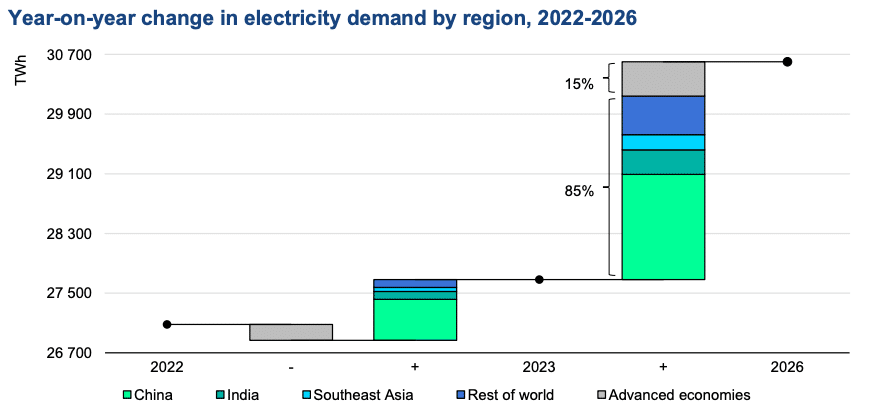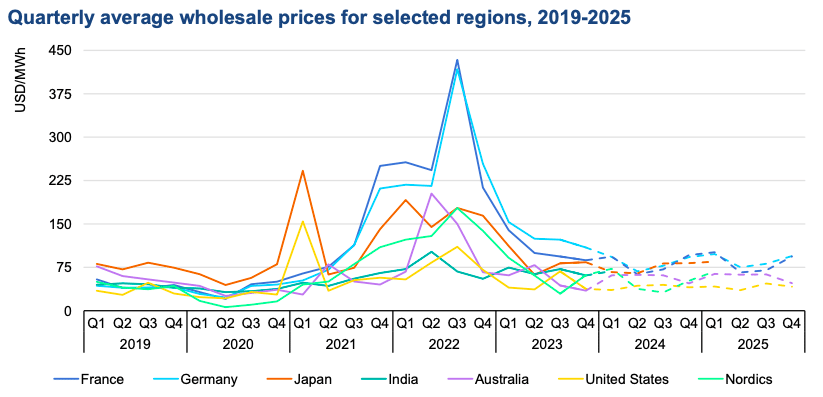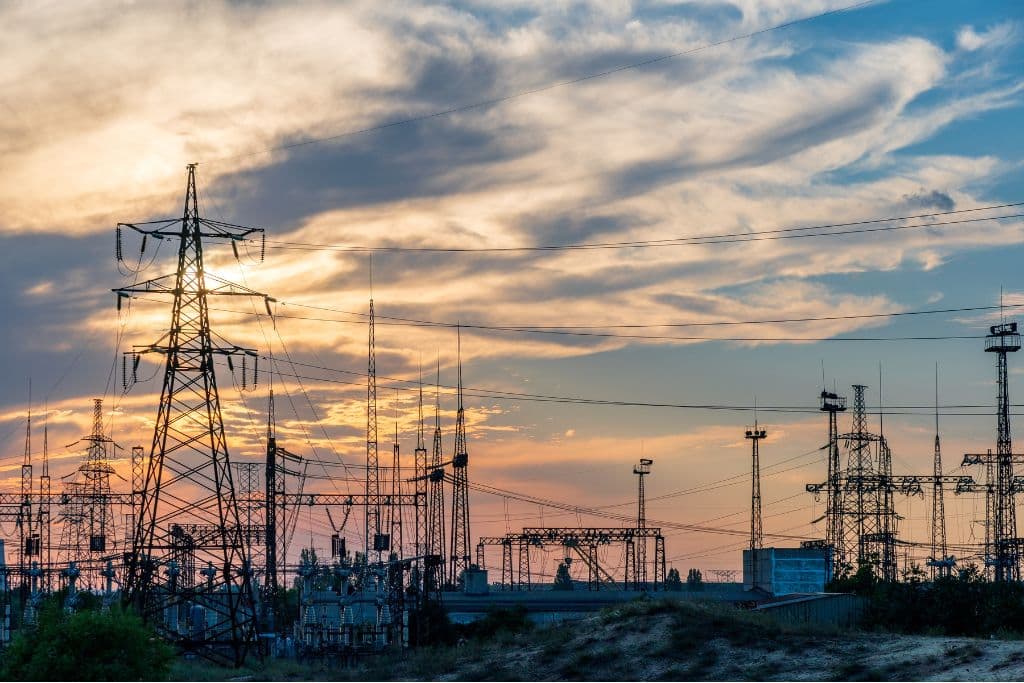Renewables and nuclear’s unprecedented growth will enable low-emissions electricity generation to outpace demand growth globally, the agency said.
—
Low-emissions energy sources are projected to cover all of the world’s additional electricity demand over the next three years, a new report has found.
Between now and 2026, global electricity demand is expected to grow at an accelerated rate, with an average annual increase of 3.4% and about 85% of this demand coming from emerging economies in Southeast Asia as well as China and India, according to the International Energy Agency’s (IEA) annual report on the developments in the electricity market released last week. Energy-intensive data centres will also contribute to new demand and are forecast to consume as much electricity as Japan – the world’s fifth-largest emitter – by 2026.
Contrarily, in 2023, advanced economies such as the US and Europe experienced a 1.6% and 3.2% drop in electricity demand, respectively, owing to milder weather conditions and “permanent demand destruction” in energy-intensive industries such as chemicals and metals.

In Africa, per capita electricity consumption has been stagnant for more than three decades. Last year, it was half of India’s and 70% lower than demand in Southeast Asian countries.
“Electricity use is a key indicator of economic development in any country, and it’s a grim sign that it has flatlined in Africa on a per capita basis for over three decades,” said Fatih Birol, the agency’s Executive Director.
Despite predicted demand increase in the coming years in line with the rapid growth in Africa’s population, the continent will need to more than double energy investments by 2030 and direct approximately two-thirds of this spending towards clean energy development, the report suggested. As of last year, more than 40% of Africa’s population still lacked access to electricity.
“Access to reliable, affordable and sustainable energy for all citizens is essential for African countries to achieve their economic and climate goals. The international community needs to work together with African governments to enable the urgent progress that is needed.”
You might also like: 3 Challenges to South Africa’s Clean Energy Transition
Record Surge in Clean Energy Generation
The report also found that the surge in electricity generation will be met by record-setting electricity generation from low-emission sources – including renewables such as solar and wind as well as nuclear energy. Together, they are expected to account for nearly half of the world’s electricity generation by as early as 2026, up from 40% in 2023, and they are forecast to surpass coal as the largest contributor to global electricity. When this happens, it will be the first time in more than five decades that the share of fossil fuels in global generation falls below 60%, marking a crucial moment in the fight against climate change. These rapid developments will also bring the world closer to the goal of tripling renewable capacity by 2030 agreed upon at the recent UN climate summit (COP28) in Dubai.
“The power sector currently produces more CO2 emissions than any other in the world economy, so it’s encouraging that the rapid growth of renewables and a steady expansion of nuclear power are together on course to match all the increase in global electricity demand over the next three years,” said Birol, who called the trends “promising.”
With various countries including France, Japan, China, India, and Korea increasing nuclear output, partly as a consequence of the energy crisis sparked by Russia’s invasion of Ukraine in 2022, the agency also predicts that nuclear power generation will reach an all-time high by 2025.
Prices
The report also sheds light on regional variations in electricity prices.
Despite falling from their 2022 peak, prices remained higher than their pre-pandemic levels, with differences across regions.

Europe, for instance, experienced a decline in wholesale electricity prices by over 50% on average in 2023, following record highs in 2022 due to geopolitical events. Nevertheless, they remained more than double pre-Covid19 levels. Similarly, the US witnessed a 15% increase compared to 2019, while Australia saw a 50% decrease from 2022 and a 10% decrease from 2019.
You might also like: EU Fossil Fuel CO2 Emissions Hit 60-Year Low in 2023 Amid Clean Energy Expansion


















